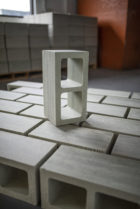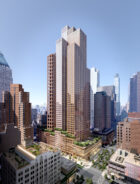Toward a carbon-negative architecture
With 40 percent of global carbon emissions coming from the building industry and from buildings themselves, SOM is determined to develop new methods and materials in the pursuit of creating zero-carbon and carbon-negative buildings.
Prometheus Materials, a start-up company spun out of a research program at the University of Colorado Boulder, has teamed up with SOM to explore and establish applications for this new generation of biological materials that could turn the construction industry into a positive force in the fight against climate change.










